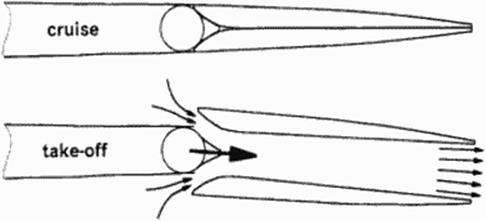Presently, emissions are respected only for the certification of engines with respect to a typical landing and take-off (LTO) cycle which is related to the airport area pollution.
Cruise emissions still arc regarded to be (at least weakly) covered by LTO-rcquire- ments Future will show if this assumption remains valid or if new rules will develop
SCTs fly higher than subsonic aircraft; therefore their influence on the stratosphere and on the o/one layer is stronger. The stratosphere has not so much air exchange as the troposphere and therefore is more sensible. Interestingly, though, recent measurements – like the Airbus-program М02АЮ – indicate some strong global air exchange with the stratosphere.
Present rcscarch-bascd knowledge says that SCTs’ influence on stratosphere and ozone layer is low. even below measurement accuracy (± 1% steady state ozon change). SCTs below Mach 2 and subsonic aircraft mainly produce ozone, whereas SCTs beyond Mach 2 seem to destroy some ozone. Ozone production seems to change to ozone destruction at the upper limit of the tropopausc at about 18 km altitude (a mean value, higher at the equator, lower at the poles and in winter). In troposphere and tropopause the NO* of the aircraft exhausts generate ozone; but at least as important seems to be the strong affinity of NO* to the gaseous HC1 which is neutralized by NO* in the mean latitudes, transported to the poles, stored there in polar stratospheric clouds (PSC) and later on released there. If this holds, aircraft arc responsible for maintaining acceptable ozone levels in our mean latitudes by transferring some destruction to the poles
Often water vapor in the exhaust is cited as a contributor to the green house effect. It is not yet clear which contribution is more important: the green house effect which reflects earth infrared energy back to the earth, or the contrail shielding w hich inhibits sun energy from reaching the earth’s surface. In any case, the worldw ide water vapor emissions of ail aircraft have to
be multiplied by 104 (!) in order to get a first very small reaction in tlie model calculations. On the other hand, phenomena of atmospheric physics arc strongly nonlinear; so. today there exists not any useful indication on the importance of water vapor exhaust.
Altogether, scientific understanding and modelling of the stratosphere is not yet mature Prediction tests of proposed changes mostly don’t meet the data measured later-on. at least in the northern hemisphere with very complicated weather conditions. But a new SCT program will only be launched if certification and operation of many aircraft for many years can be based on reliable scientific predictions of the environmental implications











